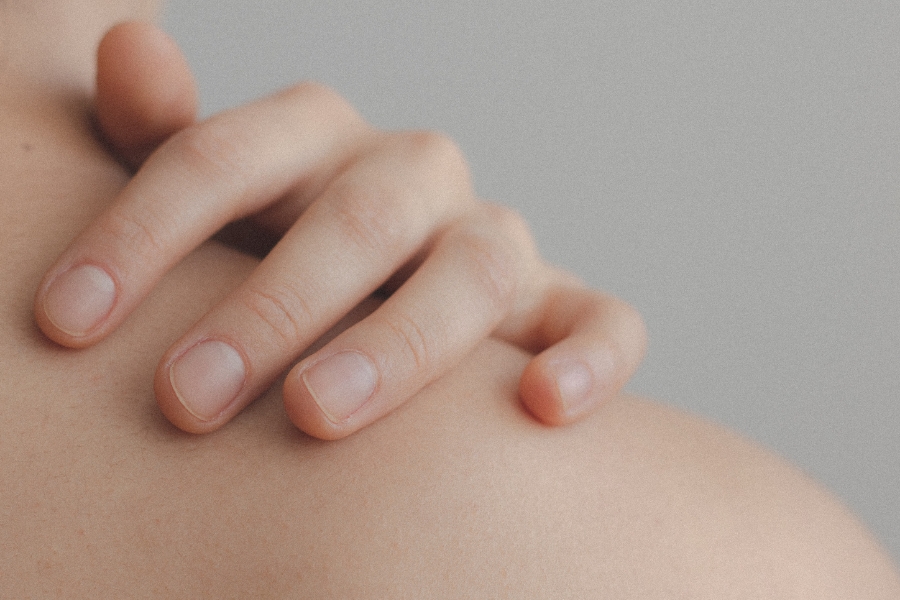Seborrheic keratosis is amongst the most common cutaneous (skin) lesions and affects approximately eighty-three million Americans. It is a benign (non-cancerous) skin condition that appears as a brown, black, or tan growth. While one lesion can appear on its own, multiple growths are more common. They tend to develop in older Americans appearing on the face, chest, shoulders, or back with a waxy, scaly, and slightly elevated appearance. Seborrheic keratoses grow slowly, in groups or singly. Most people will develop at least one seborrheic keratosis during their lifetime. They are harmless and do not require treatment. If the client finds the lesions irritating, a medical provider can remove it for them.
The United States reports more than three million cases each year.
- Both sexes are affected equally.
- As with any skin condition, seborrheic keratosis requires a medical diagnosis.
- Treatment is not necessary because the lesions are benign but can be removed for cosmetic purposes, irritation, or if bleeding occurs.
Common symptoms include itchiness, small bumps on the skin, and waxy elevated skin lesions.
APPEARANCE
The appearance of seborrheic keratoses can vary widely. Color can range from a light beige or tan to a deeper brown or even ebony. Some seborrheic keratoses have a texture that is rough, wart-like, and bumpy with a grainy surface that crumbles easily.
- Other seborrheic keratoses are smooth and waxy.
- They are usually round or oval-shaped.
- While some seborrheic keratoses are very small, others may grow up to 13 to 16 inches in diameter.
- Some skin care professionals mistake a seborrheic keratoses for warts, moles, skin tags, or skin cancer.
Contact a medical provider if multiple lesions develop over a short period of time or if irritation or bleeding occurs. Any suspicious changes in the skin, including growths, lesions that bleed, or don’t heal, should always be diagnosed because the growth could be cancerous.
CAUSES
The cause of seborrheic keratosis is unknown. Genetics may play a role as these growths tend to be hereditary. Ultraviolet exposure can also factor into the development of seborrheic keratoses. Some studies support the development of seborrheic keratoses following sun exposure. More research is needed because seborrheic keratoses also develop on skin that has not been exposed to ultraviolet rays.
RISK FACTORS
The first risk factor is age, as most seborrheic keratoses develop over the age of 50. It is rare for a child to develop seborrheic keratoses. Most people develop these growths during middle age or later. The number of seborrheic keratoses tends to increase with age. Some women develop seborrheic keratoses during pregnancy or after estrogen replacement therapy, which would suggest a possible hormonal component to this condition. Light-skinned individuals are most likely to develop these harmless growths. The next most common group are individuals with medium to dark skin.
In dark-skinned ethnicities, seborrheic keratoses tend to be small and appear around the eyes.
Removal Options
The issue with many removal methods is that they can be painful and may trigger post-inflammatory hyperpigmentation.
- Cryosurgery is a method that involves freezing seborrheic keratosis with liquid nitrogen.
- Curettage involves scraping the lesion from the surface of the skin.
- Electrocautery is the burning of the growth(s) with an electric current.
- Ablation is done through laser removal that vaporizes the lesion.
- Apple cider vinegar dissolves the seborrheic keratosis.
PROTOCAL
- Saturate a two-by-two piece of gauze or cotton ball in apple cider vinegar.
- Secure the soaked implement with a Band-Aid for 10 to 15 minutes.
- Remove and cleanse with warm soap and water.
- Allow the area to dry unbandaged.
- Repeat daily for two weeks.
CHEMICAL PEELS
Chemical peels containing 20% to 70% glycolic acid have been used by dermatologists to treat seborrheic keratoses and other skin lesions.
PRESCRIPTION TREATMENT METHODS
The FDA-approved hydrogen peroxide 40% topical solution (Eskata–Aclaris Therapeutics) can be used for the treatment of raised seborrheic keratoses in adults. Treatment included a single in-office session where the solution is applied to the lesions four times, approximately one minute apart. Unfortunately, the medication did not achieve popularity, so the company discontinued production in 2019.
Wart Peel (5-FU 2.5%/salicylic acid 17%) is a prescription medication used to treat seborrheic keratoses at home, with weekly office follow-ups. Typically prescribed in a five milliliter tube, this medication can address one to two dozen lesions (size-dependent), which is a very cost-effective option for clients.
A good skin care professional is always well educated. While the aesthetician is unable to treat this condition for their client, they can undoubtedly educate and refer them to a medical professional who can offer options for treatment and removal.

Brenda Linday is a licensed aesthetician, licensed aesthetic instructor, and certified aesthetic consultant with over 16 years’ experience in the medical aesthetic industry. Linday serves as a consultant for medical and aesthetic companies desiring to build strong sales and education teams. She develops clinical and sales education content, and trains sales and educational units, clinicians, physicians, and distributors around the world. Linday is also a featured author in many industry publications. Her passion is sharing her wealth of knowledge with other like-minded professionals who believe that education is the key to building lasting relationships with our clients, making each clinician more successful by increasing client satisfaction. Reach her at This email address is being protected from spambots. You need JavaScript enabled to view it. or @LindayConsult.
